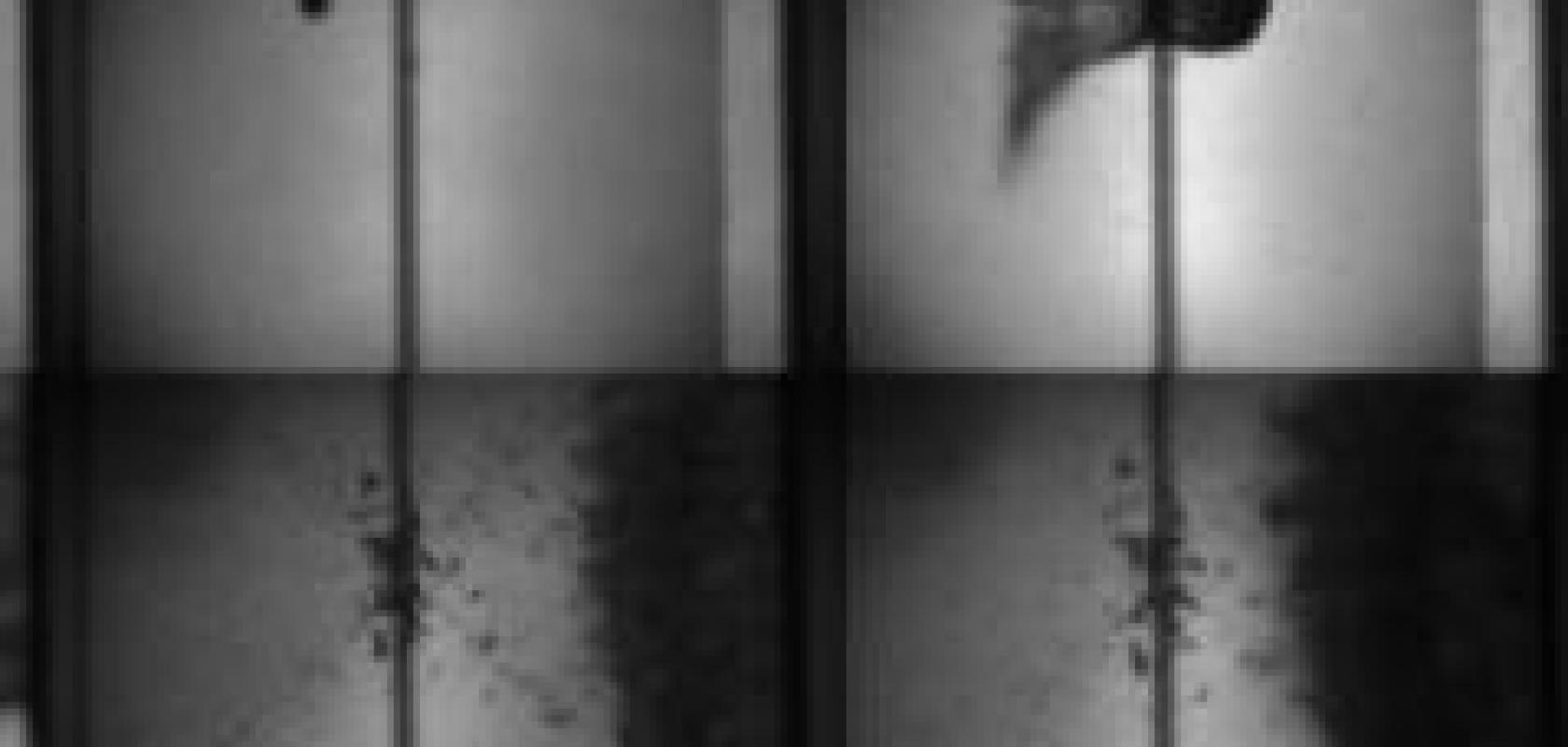The Thiot Ingenierie Shock Physics Laboratory (Puybrun, France) has used ultra-high speed framing cameras to study high velocity impacts of aluminium spheres. The research has attracted interest from military and aerospace industries and potential applications include enhancing the ability of aircraft to survive in-flight explosions and in protecting satellites from damage from stellar debris.
The institute used Specialised Imaging's SIM-8 ultra-high speed camera to model the hypervelocity impact by recording a 3mm ball with a velocity in excess of 4,000m/s, just before, at and after impact. To provide accurate measurements of the projectiles prior to impact it was determined that exposure times of 20ns or less were required to reduce motion blur to less than the size of a pixel. Because of such short exposure times, illumination needed to be strong enough to fully define the edges and the corners of the projectile.
The SIM-8 captured the images at 200,000fps with 20ns exposure. The 3mm projectile was fired from a fixed 2-stage light gas gun. The event was backlit using a SI-AD500 flash lamp to provide adequate illumination for the complete event.
The high resolution images from the SIM-8 clearly show the cloud of ejecta thrown backwards on impact and also demonstrates that even though the projectile disintegrates on impact, the fragments maintain the original projectile shape ahead of the main fragment cloud. The test also showed that the remaining fragments do not have enough energy to penetrate a second aluminium plate when two thin layers were used instead of one thicker layer.
SIM-8 provides a choice of up to eight separate optical channels and effects such as parallax and shading are eliminated. High spatial resolution (>50 lp/mm) is the same from frame to frame and in both axes. Individual ultra-high resolution intensified CCD detectors offer almost infinite control over gain and exposure allowing researchers freedom to capture images of difficult transient phenomena.


